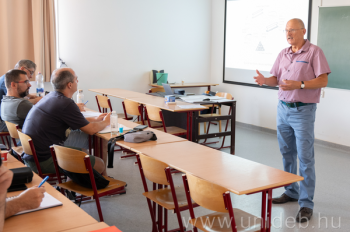
Understanding how a body exchanges heat with its surroundings is a cornerstone of thermal engineering. The traditional description—Newton’s Law of Cooling—was first articulated by Isaac Newton in the early 18th century, yet modern researchers at the University of Debrecen in Hungary have proposed a clearer, more practical version of this classic relationship. Their work, published in the *International Journal of Heat and Mass Transfer*, offers engineers and designers a streamlined tool for predicting temperature changes in a wide range of systems.
Revisiting a Classical Relationship
Newton’s original observation noted that a cooling or warming body tends to approach the ambient temperature at a rate proportional to the temperature difference. Over the centuries, scientists refined this idea into a mathematically rigorous formula that integrates heat transfer modes, material properties, and environmental factors. However, the complexity of the resulting expressions made them difficult to apply directly in everyday engineering projects.
The Core Issue
The main challenge has been reconciling disparate experimental data—each stemming from different object shapes, sizes, materials, and surrounding conditions—into a single, unified model. Heat transfer occurs through conduction, convection, and radiation, each with distinct dependencies on variables such as surface area, temperature gradients, and ambient fluid properties. Attempts to capture all these effects historically required layered approximations that an engineer must interpret before use.
The New Formula
Lead author István Árpád and his colleagues conducted an exhaustive review of literature and heat‑transfer textbooks, followed by a series of controlled experiments. Their analysis culminated in a new form of Newton’s Law that retains the essential physical insight but eliminates extraneous terms and coefficients. The revised expression can be written as:
\[ \frac{dT}{dt} = -k\,(T – T_{\text{amb}})\]
where k is a single proportionality constant that captures the combined effects of convection, radiation, and conduction for the specific system under study. By fitting k to a small set of benchmark measurements for a given material and geometry, engineers can predict temperature evolution with high fidelity.
What sets this reformulation apart is its simplicity. Instead of juggling multiple heat‑transfer coefficients—one for each mode—practice now focuses on determining a single, experiment‑derived constant. Moreover, the new formula is dimensionally consistent and aligns closely with the notions taught in introductory thermodynamics, making it more accessible to students who seek to apply theory without delving into complex derivations.
Implications for Industry and Research
Engineers can apply the streamlined law in several critical sectors:
- Battery thermal management: Predicting the temperature swing in lithium‑ion cells during charge/discharge cycles, helping design more robust cooling systems.
- Building heat‑storage systems: Optimizing the size and material of thermal batteries to enhance energy efficiency.
- Food processing: Controlling cooling rates to preserve texture and flavor in perishable goods.
- Metallurgical furnaces: Refining heat‑up schedules for steel components to minimize defects.
Because the new law is experimentally grounded, it can be incorporated into simulation software with minimal calibration. This accelerates design iterations and reduces the cost of prototyping.
Case Study: Heat‑Storage Design
The research team demonstrated a heat‑storage system that exploited larger storage volumes to achieve superior energy efficiency—a finding that challenges the conventional preference for smaller, more convenient units. By applying the new formula, they quantified the temperature gradient across a batch of molten material and scaled the design to achieve optimal storage capacity without compromising safety or operational speed.
Acknowledgements and Publication Recognition
The University of Debrecen and the Count István Tisza Foundation honored the researchers with the Publication Award, underscoring the paper’s significance within the engineering community. Publication in the *International Journal of Heat and Mass Transfer* ensures the findings reach a global audience of academics and practitioners.
Next Steps for Engineers and Academics
To leverage this new approach, professionals should:
- Identify the materials and geometries relevant to their application.
- Collect a small set of temperature-time data under controlled conditions.
- Calculate the proportionality constant k from the experimental curve.
- Integrate the simplified law into design calculations or CFD models.
Educational institutions can incorporate the updated law into coursework, giving students a tangible example of how theoretical advances translate into engineering practice.
Explore Further Resources
The full article is available through the International Journal of Heat and Mass Transfer. For engineers looking to implement the new law, the University of Debrecen’s Faculty of Engineering offers workshops and consultation services. Students and researchers seeking additional guidance can visit the university’s news portal for related publications and upcoming events.
Action Items for Stakeholders
1. Schedule a consultation with the Faculty of Engineering to discuss application pathways for your projects.
2. Submit your application to collaborate on research extensions or to pursue graduate studies focused on heat transfer.
3. Read related articles in the university’s research blog to stay updated on ongoing innovations in thermal science.
4. Explore quick‑start guides for integrating the new formula into your simulation tools.
5. Join the university’s community discussion to share insights and challenges with peers.
By adopting the University of Debrecen’s simplified Newton’s Law of Cooling, engineers and scientists can achieve faster, more accurate predictions, ultimately leading to better-performing systems and innovative solutions across multiple industries.

